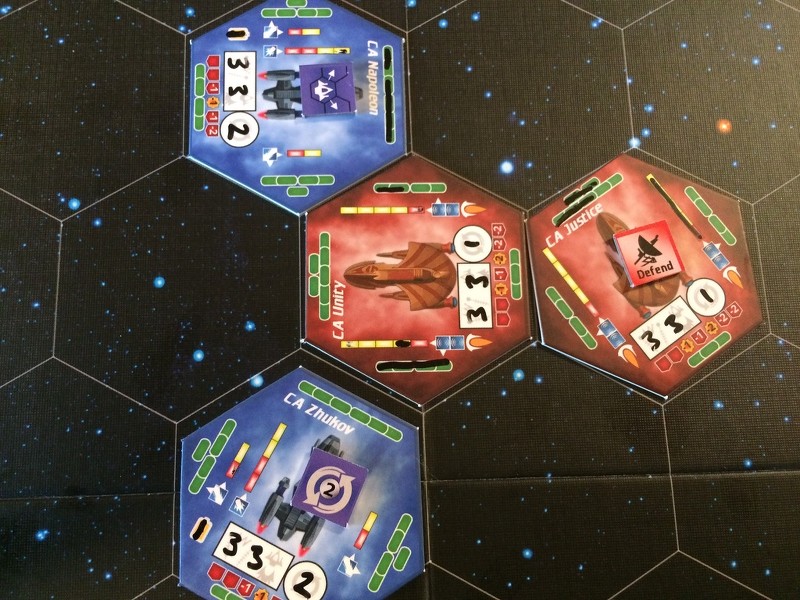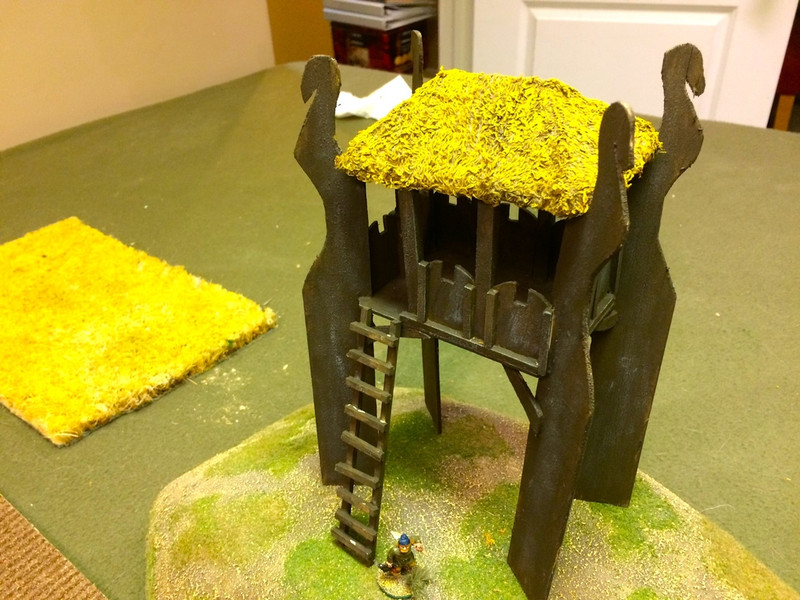Madame Padre and I are on holiday this week, in the part of Ontario known as the Muskokas, or cottage country, near fabled Algonquin Park. It’s sweater weather, but the days are mostly sunny and the leaves are turning, it’s magical.

Madame Padre is out with her camera when we’re not in the canoe.
 While I didn’t bring any figures to paint, I did bring a game: GMT’s 2015 space battles game, Talon.
While I didn’t bring any figures to paint, I did bring a game: GMT’s 2015 space battles game, Talon.
 Talon is designed by Jim Krohn - I was pleased to find that he is a pastor as well as a game designer. Krohn is best known for his 2011 GMT title, Space Empires 4X (the 4X meaning eXplore, expand, eXploit and eXterminate). Whereas Space Empires is a big game of building empires, Talon is game of individual ships clashing in space. Talon is designed to be bolted on to Space Empires if one wanted to fight the SE battles tactically, though that seems like a lot of work. With Talon as it is, you can fight battles following the supplied scenarios, or using a points system.
Talon is designed by Jim Krohn - I was pleased to find that he is a pastor as well as a game designer. Krohn is best known for his 2011 GMT title, Space Empires 4X (the 4X meaning eXplore, expand, eXploit and eXterminate). Whereas Space Empires is a big game of building empires, Talon is game of individual ships clashing in space. Talon is designed to be bolted on to Space Empires if one wanted to fight the SE battles tactically, though that seems like a lot of work. With Talon as it is, you can fight battles following the supplied scenarios, or using a points system.
There are a lot of reviews of Talon out there, including this one, which says much more, more preceptively, than I can say here. Like the review, I had a strong first impression of the game. It’s a little challenging to figure out from the rule book at first, but by following the tutorial scenario it started to come together.
The first decision you have to make with Talon is to trust the recommendation to do the bookkeeping on the laminated counters, using the supplied dry-erase makers, rather than the printed ship roster sheets which are also supplied. I resisted for a bit, but then unwrapped the dry erase makers and found it quite easy to use. Here you can see a Terran heavy cruiser in blue and the alien (Talon) heavy cruiser in red. The most important data are the lines of numbers, 3-3-2 for the Terran and 3-3-1 for the Talon ship. These numbers are the Power Curves. The first number is the AP (Available Power) generated by the ship’s plant, and the second is the speed (the higher the number, the faster). The third number is the turn radius: the lower the number, the more nimble the ship.

A game turn lasts six impulses. During each impulse, ships can do different things depending on their Power Curve settings. Power is useful for many reasons; it can reinforce shields as long as they are still up, it can be used to defend or to try and steal the initiative (very useful when one could shot can kill a weakened ship), or ti temporarily decrease a ship's turn radius when trying to attack or evade. Most importantly, it can be used to recharge weapons. The Power Curve can be adjusted up or down after every six impulses, during the Power Phase.
On these two counters, you can see that both ships have marks to indicate that their front shields (the green boxes) are knocked down and out of action. Once a shield is down, hits go to the hull (the red boxes below the Power Curve number). As hull boxes get marked off, critical hits can occur and the amount of available power decreases until the ship blows up.
In the two games I’ve played thus far, I’ve found that after an initial exchange of fire, which usually knocks down the front shields, ships tend to manoeuvre around each other, recharging their weapons while trying to keep their intact shields facing the enemy. Small actions thus have the feel of frigates from the age of sail, looking for a moment of advantage while trying to keep out of the enemy’s broadside. Because the weapons ranges are between 1 and 3 hexes, you need to be careful about losing the initiative and having an enemy ship turn and fire on a weak or missing shield This can happen when the enemy steals the initiative, or when a ship moves out of initiative (the Terrans and Talon both have special tech that allows them to do this on a limited basis).

In the first scenario, two Terran and two Talon heavy cruisers mix it up. After the first exchange, the Napoleon has lost its front shields, the Unity has lost its port shield, and the Justice has lost most of its front shield. The yellow and red bars represent weapons and their charges. Ships start a scenario with charged weapons, indicated by marking black on the laminated counters. Once the weapon is fired, the black line is erased, and must slowly be charged up again. Here, of all the four ships, only the Justice still has a charged weapon - the starboard disruptors. The Justice also has a Defend counter on it, indicating that the Talon ship is using its Available Power this impulse to protect the initiative. At the end of an impulse, if one side has spent more Power to take the initiative than the other side has spent Power defending it, the initiative passes to the other side. As the game goes on, with multiple ships, there are a lot of decisions about how to use Power as it comes available - recharge the weapons, or try to gain/defend the initiative.

As I said, trusting the design intention and using the dry-erase markers on the laminated counters is a bit of a leap of faith. The system does work, though I found that after two games, one of the two markers wasn’t working that well. Hopefully I can find more markers this size at the local office supply store. One thing I didn’t have was the Q-tips that are recommended for erasing the counters. Otherwise, using a bit of wadded up tissue as I was, it’s easy to remove the wrong information from a counter.

Some of the complaints about Talon that I’ve read online are that players spend a lot of time dancing around one another, recharging weapons while trying to stay out of harm’s way. This may be true of the small scale battles I’ve fought so far, while other reviewers mention that the game really shines with large fleets on each side. These comments also mention that Talon as a game is much more forgiving to players than earlier games such as Star Fleet Battles, which was legendary in its complexity. There are more advanced rules in Talon that I haven’t tried yet, including missiles, fighter wings, carriers, super-heavy battleships and exotic weapons. I’m looking forward to trying these rules in future games.
Some might find that the universe of Talon is a little unimaginative. You have the Terrans, and then a fairly faceless enemy, the Talon, who are sort of a generic, warlike race that comes along to make Terra’s life miserable. Are they like Klingons? Romulans? Does anyone really care? In defence of Krohn, he has written a player’s guide which is considerably longer than the rule book, full of fluff and backstory to explain the conflict, but all from the Terran point of view. Another possible objection is the symmetry between the two sides. While there are minor differences between the Terran and Talon ships, they both have the same ship classes: Scouts, Destroyers, Light and Heavy Cruisers, etc. Does this make sense? Can one imagine an alien race that only has one or two types of ships? I can imagine an SF writer like Brian Aldiss thinking out of the box about an alien culture and its technology. However, in a game that includes a point system for building battles, perhaps one needs symmetry.
Finally, one could ask how a game like this is different from, say, a WW2 or modern naval war-game. Perhaps a space game is just a naval game by another name, in that you have hulls, ranged weapons, speed and armour (shields by another name). I would say the difference is the novel impulse mechanic and the inherent logic of the Power Curve system which Krohn as thought up, plus the copious amounts of chrome layered onto the game.
So, my first impressions of Talon are very favourable. The first small battles I fought took about 90 minutes to resolve, the second game going much faster after I figured out the mechanics. In fact, I like it so much, I’ve put my name in for GMT’s P500 club for the Talon expansion that is planned.
Blessings to your space ships!
MP+





























